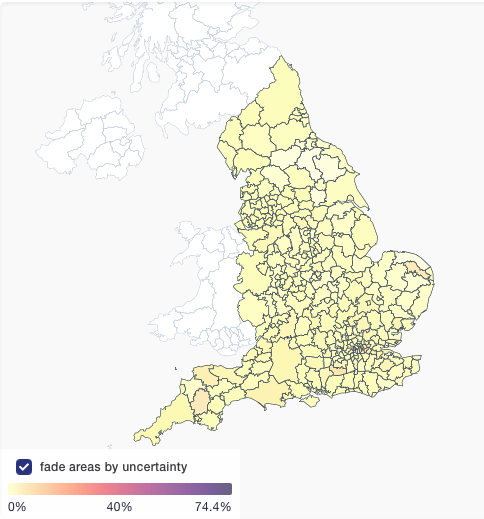Took a look at the spike mutations in B.1.1.529 this evening, and colour coded them (details below)...there is...not much green.🧵 

First the obviously bad stuff (red): nine mutations seen in previous VOCs. There's a lot of overlap already among VOCs (convergent evolution), but this variant has an unprecedented sampling from mutations previously seen in Alpha, Beta, Gamma and Delta separately.
In orange are three mutations that are probably meaningful biological changes for the virus, but not previously seen in VOCs. Two from VUI level lineages that likely had modest advantages over original virus, and E484A which is at a key site in the receptor binding domain.
Next eleven things seen rarely or never before (blue) that may be functional and just new to us, or may be a side-effect of whatever process led to so many mutations in this lineage (i.e. either neutral or mildly deleterious). Need more data on these.
In green is just D614G, which has been fixed in all SARS-CoV-2 since early 2020.
Finally, three shades of purple which are new (not in previous VOCs) but have some other data to suggest they may be functional. First is a deletion/substitution/insertion hotspot in the N terminal domain, that may be further remodelling the protein structure there.
Then there's a group of 4 nearby substitutions (3 in the space of 5 amino acids) that have not been seen before, but are so close together that I doubt its coincidence. They are also very close to the (previously conserved) binding site of sotrovimab, a therapeutic antibody. 

Finally S477N and Q498R, predicted in an experimental evolution paper to substantially increase ACE2 binding together with N501Y, but only seen in the wild separately or rarely. Seeing this full combination now (along with everything else) is grim.
nature.com/articles/s4156…
nature.com/articles/s4156…
There are also multiple (possibly funcitonal) mutations in genes other than spike: notably R203K and G204R in nucleocapsid, which were recently shown to be key in increasing transmissibility, and are present in all VOCs to date. science.org/doi/10.1126/sc…
So the mutation profile is bad (as @PeacockFlu and others have already pointed out). We don't yet know how they act together, or how a virus with so many changes will behave.
We need to learn more, fast. To end on a hopeful note, it's mind-blowing how quickly we've got this far. Kudos to @Tuliodna et al for getting this out, and setting the global scientific community onto experiments to answer more of these questions. Let's get to work.
• • •
Missing some Tweet in this thread? You can try to
force a refresh












